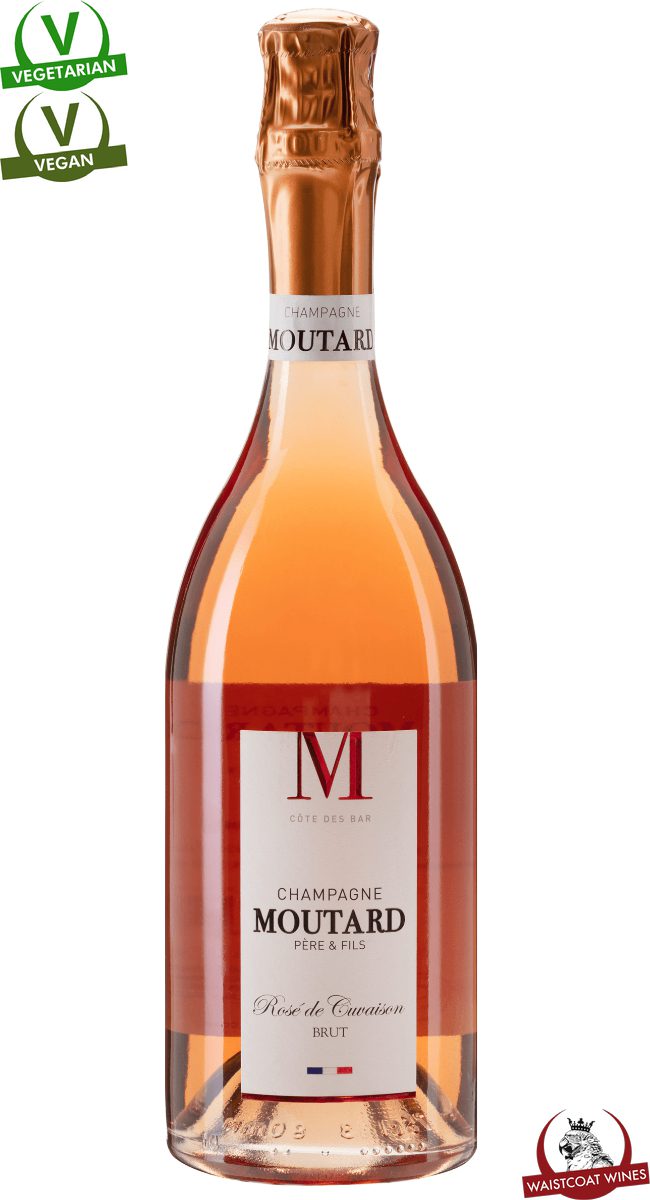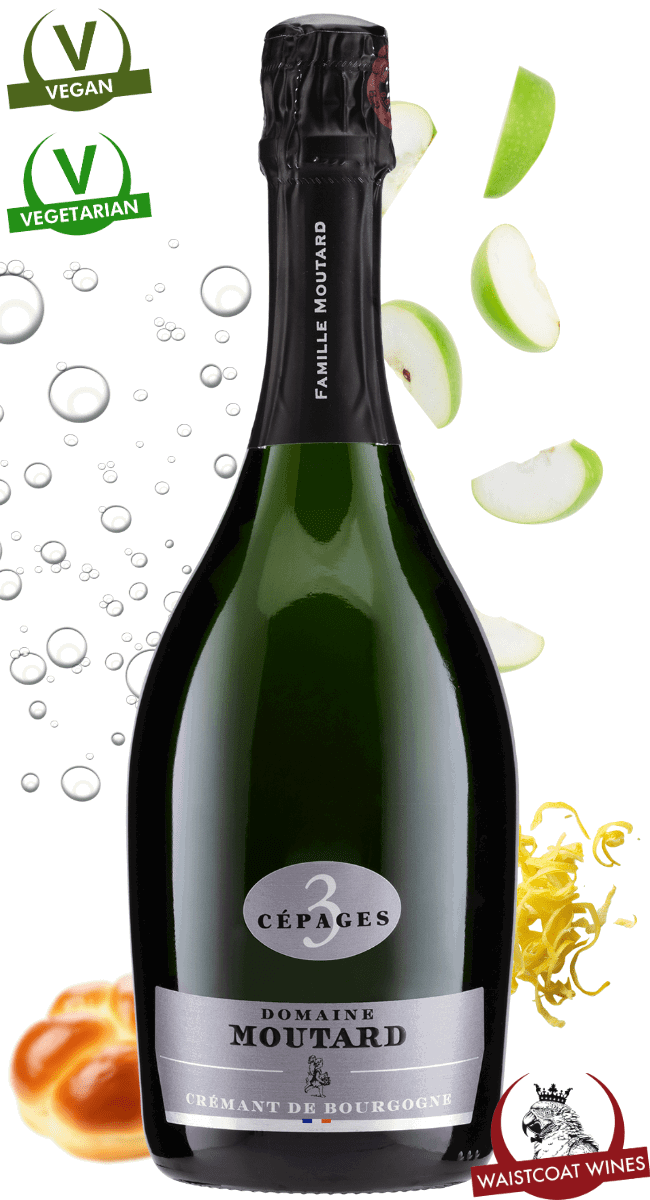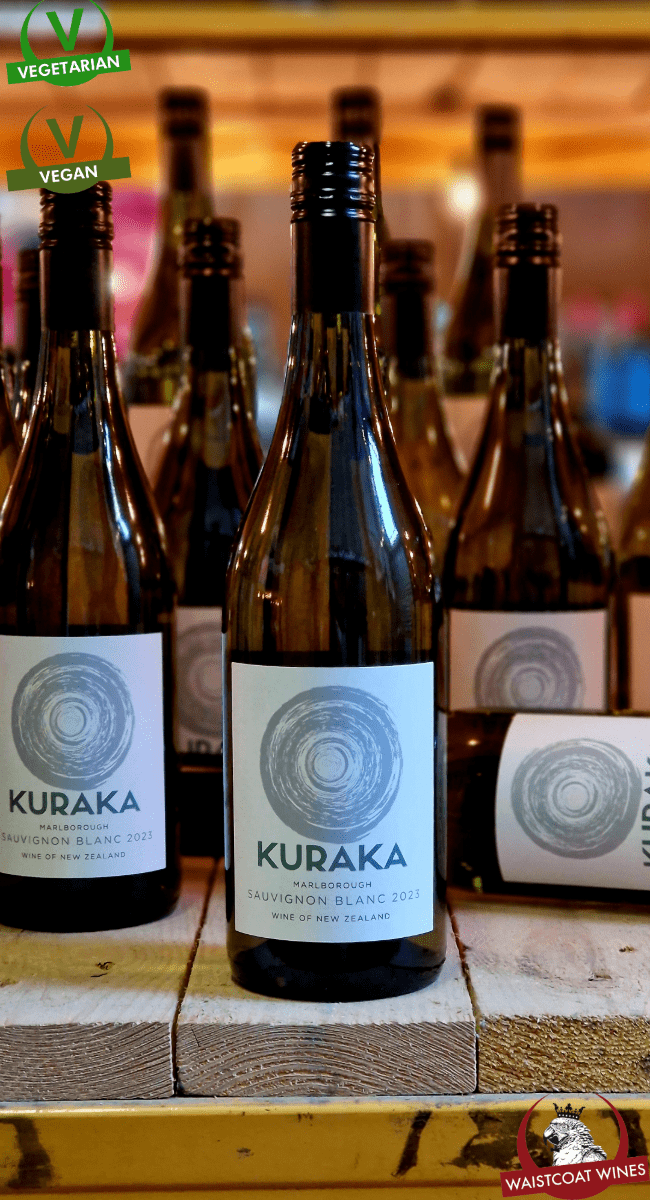Ample nose with hints of red fruit and the forest floor. Full-bodied palate with good persistence and excellent balance with spiced red berry fruit flavours. Vinification via the Skin Contact method which creates the beautiful soft pink colour. 36 months on the lees in Moutards chalk cellars. Serve at 12c
GROWER CHAMPAGNE
Managed by a family of winegrowers from father to son for nearly four centuries, Maison Moutard is based in Buxeuil, in the Vienne region. This family business is among the first to develop its artisanal Champagnes from its own grapes. Indeed, the winegrowers sold still wine to the big Champagne Houses. However, Paul Moutard had chosen to produce and sell his Champagne. In addition, he had embarked on the creation of his own trading house.
Inheriting the art of cultivating the local land from his father, Lucien Moutard also passed it on to his children François, Agnès and Véronique, who are currently at the head of this estate. Today, the siblings operate a vineyard of approximately 23 hectares in the Rosé des Riceys appellation. Currently, the fourth generation, made up of Alexandre, Benoît, Thomas, Edouard and Victor, perpetuates the family tradition and continues to develop the reputation of the House throughout the world.
Today, the members of the Moutard family still cultivate a taste for excellence, making cuvées that reflect their passion for their profession and their perfectionism.
Over the years, Maison Moutard has successively bought vineyards on the Côte des Bar. Often relegated to second place, this terroir has gained in reputation in particular thanks to this family estate. The vines bury their roots in a Kimmeridgien soil made up of marls and marly limestones of several million years. This terroir is also distinguished by its climate with oceanic and continental influences. These different characteristics give more roundness, complexity and character to the Champagnes of the Côte des Bar.
To produce Champagnes, the Moutard family cultivates different grape varieties on their vineyard of approximately 23 hectares, including the three main varieties of the appellation: Pinot Noir, Chardonnay and Pinot Meunier. This Champagne House is also one of the rare estates to cultivate marginal grape varieties which have almost disappeared from the Champagne vineyards such as Pinot Blanc, Arbane and Petit Meslier. These typical grape varieties allow this house to create Champagnes of rare finesse and incomparable organoleptic richness. The family notably perpetuates the cultivation of Arbane, on a plot planted in 1952 by Lucien Moutard, even devoting a special cuvée to it. Although it is difficult to work with and it ripens late, this grape gives exceptional finesse to Champagnes.
Nurturing great ambitions, this small Grower Champagne producer does not stop at Champagne. Visionary, Maison Moutard also produces wines and Crémants in Burgundy under different appellations:
- Chablis Premier Cru Fourchaume
- Chablis Premier Cru Côte de Léchet
- Chablis
- Petit Chablis
- Bourgogne Tonnerre
- Bourgogne Épineuil
- Irancy
- Crémant de Bourgogne
In addition, the family has a range of spirits produced by the Moutard-Diligent distillery (created as a reminder of the production of Marcs in 1892 by the ancestors of the family). Using copper stills, Moutards make Ratafia, Marc, Fine, liqueurs, eaux-de-vie, whisky, gin and even vodka, among others.
SUSTAINABLE VITICULTURE
Constantly in search of quality in the production of its wines, Maison Moutard seeks above all to produce healthy grapes. Thus, respect for nature, its observation, its preservation and its conservation are the watchwords of the family. The latter thus recommends artisanal and reasoned viticulture in order to respect tradition and the ecosystem.
Today, this family business continues to use some of the technical features that make up its wine-making signature. Pre-pruning in winter and pruning in spring are among these methods. In addition, the Moutards age a large part of their wines and Champagnes in Burgundy oak barrels. The bottles then rest for many years, up to more than 15 years, in the cellar.
Whether it is mechanical weeding, trimming or even harvesting, all the actions carried out are carried out taking into account the lunar calendar in order to adapt to the biological rhythm of the vine. In addition, the Moutard family now wishes to avoid as much as possible the addition of sulphites in their Champagnes.





